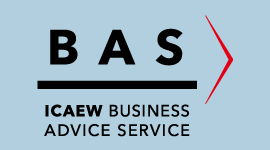With businesses facing a multitude of challenges, effective cash flow analysis and forecasting have never been more important. This guide sets out some principles for adapting your approach during economic uncertainty.
The nine principles
Principle 1: CEOs should take overall responsibility for cash management if there is a risk of business failure
Decisions around cash will be fundamental to both short-term survival and the long-term viability of the business.
- Effective cash management requires communication and co-ordination across all departments.
- Obtaining cash from customers may need conversations at senior levels to overcome roadblocks, and to balance the need to get cash in quickly while maintaining customer goodwill.
- Similarly, maintaining relationships with key suppliers needs to balance difficulties in paying them while maintaining the supplies essential to keep the business going.
- Employee morale and their ability to do their jobs will be impacted by cash management decisions.
- Lenders will want confidence that the CEO is on top of all cash-related matters.
- The CEO needs to ensure consistent messages throughout the organisation and with stakeholders.
- The CEO needs to decide whether the business is viable.
Group CEOs need to co-ordinate across all group entities to ensure the optimal use of cash and credit facilities.
Principle 2: Ensure responsibilities, reporting lines and staff cover for all cash-related matters are clearly understood throughout the organisation
These will include:
- Communication with customers, suppliers, tax authorities, insurers and lenders, with escalation routes for when there are issues.
- Payment and expense authorisation levels, which may now need to be set at higher seniority levels.
- Maintaining cash controls such as bank reconciliations, credit checks and employee expenses.
- Monitoring details of government support and how such support changes day to day.
- Reporting.
Principle 3: Set up regular cash meetings involving those with insight on predicted cash movements
- Effective chairing is key to ensure focus, realistic action plans and clear assignment of responsibilities.
- The right people could extend from the CEO to the accounts receivable supervisor.
- Frequency depends on level of concern but should be weekly at minimum.
- Document knowledge gained and key action points with responsibilities.
Principle 4: Build up forecasting effectiveness by combining business experience with the best available evidence and improving forecasting processes. Human biases need to be managed.
- The better the cash flow forecast the greater the chance of managing through the crisis and the greater the organisation’s credibility in engaging with stakeholders.
- Determine forecast horizons relevant for your business and level of detail for each eg, immediate survival, emergence from crisis and new normal.
- Draw on your best people to develop forecasts – research suggests those with training in probability and scenarios outperform others with similar experience.
- Develop information-gathering processes such as intelligence from all stakeholders, news scanning and insights from social media.
- However, weigh information carefully, considering:
- sources and whether the information comes from more than one independent source;
- anecdote versus statistics; and,
- timeliness.
- Be objective, use professional scepticism and confront the facts.
- Avoid confirmation bias – this is where people seek out information to confirm existing beliefs and ignore other relevant information.
- Produce relevant scenarios including worst case, most likely case and best case. Include predictions of earliest date additional funding may be required.
- Ensure scenarios add value as ways of generating ideas and improving response times.
- Fan charts are a useful way of visualising the increased uncertainty around cashflows as forecasts extend further into the future.
- Assess accuracy of forecasts against actuals in order to improve processes.
Principle 5: Design cash flow reports to support critical business decisions and funding applications. They should be understandable by non-accountants
- Cash flow forecasts are fundamental to determining whether the business can continue in its current form or whether more radical solutions, such as turnaround or insolvency, are necessary.
- Lenders will require cash flow forecasts as part of loan applications and ongoing monitoring, usually for the next 12 months.
- Use the direct method where possible, showing cash inflows and outflows. (The indirect method which reconciles cash to the profit and loss statement is less easily understood, although it is a useful control).
- Show cash at start of period (current account and savings accounts only), cash out and cash in, leaving a surplus or short fall.
- Show how a surplus or shortfall will be managed eg, headroom on existing facilities, obtaining increased overdraft, additional loans, sale of investments.
- Use descriptions easily understood by non-financial managers – avoid accounting jargon.
- Clearly document assumptions eg, major customer X will pay Y on date Z, with a probability of P.
Principle 6: Maintain controls over cash flow reporting
- Reconcile cash flow reports to bank statements and creditor statements and quickly chase down discrepancies.
- Show date and time prepared.
- Ensure reports are reviewed by someone other than the preparer.
- Clearly identify preparer and reviewer.
- Reconcile cash flow statements to profit and loss and balance sheet movements.
- Increase frequency and rigour of balance sheet reconciliations and substantiation to validate cash flow forecasts.
- Check consistency with other management information eg, income pipelines.
- Changes in processes and the implementation of business continuity and contingency plans may impact record keeping, cash controls and the nature of cash movements.
Principle 7: Increase frequency of reporting and consider whether to report on monthly, weekly or daily cash movements
- Rolling, detailed, weekly cash flow forecasts for 13 weeks out are often used in turnarounds and may be required for loan applications.
- Rolling, monthly cash flow for the next 12 months are usually necessary and again will be required for loan applications.
- Look further ahead if there are known, large payments due, eg, loan repayments.
- Identify process improvements to increase speed of production and accuracy of reports.
- ‘Mothballed’ businesses may have reduced reporting needs but still need to be planning for when business can restart.
Principle 8: Maintain underlying data in as much detail as possible – this enables maximum flexibility in reporting
Make the most of accounting systems – check to see whether relevant functionality is already available or whether add-on modules and apps can be obtained.
If necessary, develop a spreadsheet listing or database of material forecast cash movements to support summarised cash flow reports. Analysing debtors is particularly important. For each item:
- Assign expected, worst case and best-case dates for receipts and payments.
- Show maximum, expected and minimum amounts to take account of disputes and retentions.
- Assign probabilities to likelihood of collection for outstanding debts and success of financing applications.
- Show responsibilities for collection.
- Record notes on assumptions, risks, feedback obtained from third parties and market insight.
Principle 9: Follow ICAEW’s Twenty Spreadsheet Principles when developing cash flow reports and forecasts
- Spreadsheets are highly prone to errors, especially when put together while under stress.
- Principles include, but are not limited to, independent review; separating out inputs, workings and outputs; short and simple formulae; performing calculations only once; rigorous testing; built-in checks and alerts, and systematic backup and version control.


